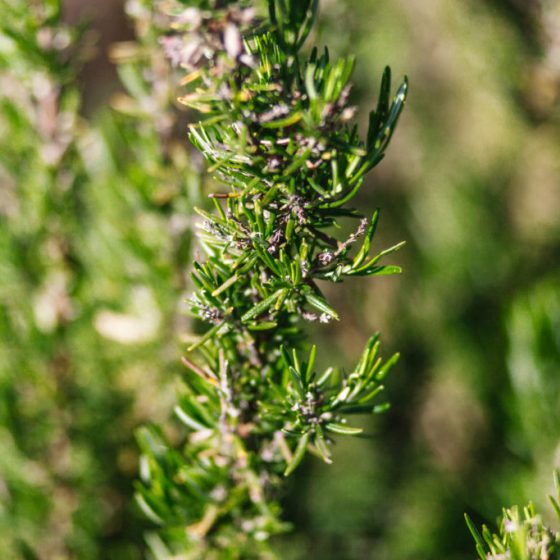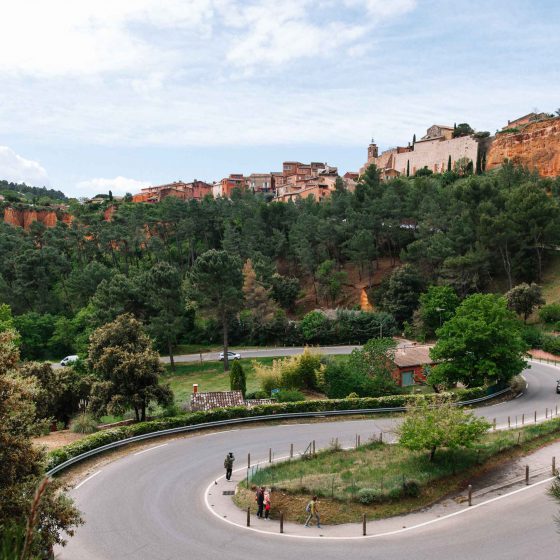Whatever the season, the lights make the colors differents, pures, intenses. So many artists came around for the autumn early morning green or the summer warm white. At mas de Cink we have in the garden typic flowers and tree of Luberon. The nature offers you its best in all directions : in the North, the Ventoux side, in the East, the wild Alpes de Haute Provence, in the Ouest the Luberon famous villages and in the South, the Luberon Mountain !
This is the aesthetic of the region to which Chagall, de Staël, Pablo Picasso, Vincent Van Gogh, and other brilliant artists succumbed. Just like lovers of a Provencal dolce vita.
Thyme, alongside rosemary and savory, is an essential herb in Luberon cuisine.
Praise of slowness
To immerse oneself in the art of living in the region, one must begin with a leisurely stroll through the villages of Luberon. They are among the most beautiful in France, perched on rocky spurs, standing as timeless sentinels, overseeing the passing of days and seasons.
“These are tough,” exclaim Roussillon, Gordes, Ménèrbes, and Bonnieux in unison, for winters are cold, summers sunny, and the Mistral wind prevails. However, the hamlets, small clusters of houses typical of Luberon, as well as the grand and bourgeois country estates, and the modest dry stone bories, insist that this does not diminish the sweetness of life.
A view of the perched village of Roussillon, located 5 minutes from Mas de Cink.
Pleasures of the table
Indulging in the Provençal way of life continues around the table, adorned with the products from the bountiful lands of a true land of plenty. Its landscapes change with the blooming of almond trees, cherry trees, lavender fields, melons, and vineyards.
Its characterful cuisine has made the most of the region’s resources, utilizing local ingredients. Ah, the savory, thyme, sage, and marjoram… to the extent that discerning palates and Michelin-starred chefs have fallen in love with them.
Bories and stone cabanons punctuate the landscapes of Luberon.
Along the way… Immerse yourself in the Provençal way of life, culminating on the roads and trails that crisscross the Luberon Regional Natural Park.
On foot, by bike, or by car, all means are good for discovering the tranquility of the Abbey of Sénanque, the languor of the pine forests, the essence of the ochre quarries…
“Provence conceals its mysteries behind their obviousness,” wrote Jean Giono.
And a thousand other transparent mysteries hidden from the impatient eyes. Jean Giono, the first, noted that “Provence conceals its mysteries behind their obviousness.” To penetrate them better, isn’t it best to set aside impatience? Mas de Cink is here to help you with that.


